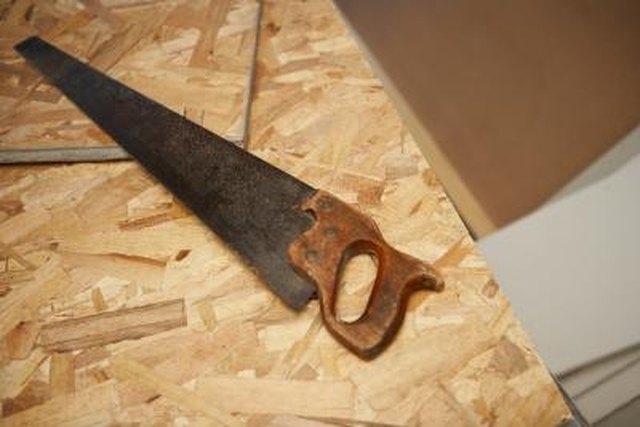Plywood is a popular material for various projects, but have you ever wondered why it sometimes emits a strong odor? In this article, we’ll explore the question: “Why does my plywood smell?” Whether you’re a DIY enthusiast or just curious, we’ll dive into the reasons behind that distinct scent and what it means for your plywood projects. So, let’s get started and uncover the mystery of plywood smells!
You might have noticed that when you bring home a new piece of plywood, it has a unique and sometimes pungent smell. But why does that happen? Well, the answer lies in the manufacturing process. Plywood is made by bonding multiple layers of thin wood veneers together with adhesives. These adhesives often contain chemicals that can release volatile organic compounds (VOCs), which are responsible for the smell. Don’t worry though, this odor is typically harmless and will dissipate over time.
The type of wood used in the plywood can also contribute to the smell. Different species of wood have their own distinct scents, and some may be stronger than others. For example, plywood made from pine or cedarwood might have a more noticeable aroma compared to plywood made from other types of wood. Understanding the factors that contribute to the smell can help you choose the right plywood for your projects and alleviate any concerns you may have. Now, let’s explore some practical tips for dealing with plywood odor.

Why Does My Plywood Smell?
Smell can be a common concern when it comes to plywood. Whether you’re using it for construction, crafting, or furniture-making, the strong odor emanating from plywood can be off-putting. But what exactly causes plywood to smell and is it harmful? In this article, we will delve into the reasons behind the smell of plywood, its potential implications, and ways to address the issue.
1. Natural Odor from Wood
When plywood is made, it goes through a process that involves layers of wood veneers being glued together with adhesive. The type of wood used, as well as the glue, can contribute to the smell. Some types of wood naturally have a more distinguishable odor, such as cedar or redwood. Additionally, certain glues and adhesives used in plywood manufacturing may have a pungent smell, especially if they contain formaldehyde.
Plywood can also absorb and retain odors from the environment it is stored in. If stored in a place with strong-smelling substances like chemicals or solvents, the plywood can absorb those odors.
2. Presence of Formaldehyde
Formaldehyde is a chemical compound commonly used in the production of plywood adhesives. It acts as a binder to hold the layers of wood veneers together. However, formaldehyde emits a strong odor that can be detected in plywood. This smell is usually described as “chemical” or “formaldehyde-like.” While the odor itself is not harmful, formaldehyde emissions can be a concern in certain settings, such as poorly ventilated areas or when the plywood is used for interior applications.
3. Improper Curing Process
During the manufacturing process, plywood undergoes a curing process where it is exposed to heat and pressure to ensure the adhesive bonds properly. If the curing process is not done correctly or if the plywood is not given sufficient time to off-gas, it can result in a lingering smell. This smell can be more noticeable in newly manufactured plywood and may dissipate over time as the off-gassing process continues.
To minimize the smell of plywood, it’s important to consider the following tips:
4. Proper Ventilation
One of the most effective ways to address the smell of plywood is by ensuring proper ventilation. If you’re using plywood in an enclosed space, make sure there is sufficient airflow to allow the off-gassing to dissipate. Open windows or use fans to circulate fresh air, especially in the early stages of plywood installation or use.
5. Allow for Off-Gassing
Plywood should be allowed to off-gas before being used in any confined space, such as indoors. If possible, store the plywood in a well-ventilated area for at least a few days to allow it to release any trapped odors. This can help reduce the smell when the plywood is eventually used.
6. Consider Low-Formaldehyde Options
If you are particularly sensitive to smells or concerned about formaldehyde emissions, opt for plywood that is labeled as low-formaldehyde or meets certain emission standards. These types of plywood are manufactured with adhesives that emit lower levels of formaldehyde, making them a safer choice for indoor applications.
7. Use Sealants or Finishes
Applying a sealant or finish to the plywood can help reduce the smell. Sealants not only provide a protective layer but can also minimize the off-gassing of the plywood. Look for sealants that are specifically designed for indoor use and are low in volatile organic compounds (VOCs) to ensure they won’t contribute to any additional odors.
In conclusion, the smell of plywood can be attributed to various factors, including the natural odor of the wood used, the presence of formaldehyde, and the curing process. While the smell itself may not be harmful, it can be unpleasant. By ensuring proper ventilation, allowing for off-gassing, considering low-formaldehyde options, and using sealants or finishes, you can mitigate the smell and make your plywood usage more enjoyable. Remember to prioritize safety and ventilation in any indoor applications of plywood.
Key Takeaways: Why Does My Plywood Smell?
- Plywood can sometimes smell due to the type of wood used in its manufacturing process.
- The smell can be caused by the wood’s natural oils or chemical treatments used to preserve or treat the plywood.
- Exposure to moisture or humidity can also contribute to plywood odor.
- If the smell persists or is excessively strong, it may be a sign of poor-quality plywood or potential issues with the wood’s treatment process.
Frequently Asked Questions
Are you experiencing a strange odor emanating from your plywood? Don’t worry, we’ve got answers to your questions about why your plywood smells. Read on to find out more.
1. What could be causing the smell coming from my plywood?
The smell from your plywood could be caused by a variety of factors, including the type of wood used, the manufacturing process, or even the presence of chemicals or adhesives. Some types of plywood, such as pressure-treated or marine-grade plywood, may have a stronger smell due to the chemicals used to treat them. Additionally, if the plywood was stored in a damp environment, it may develop a musty or mildew smell.
To determine the exact cause of the smell, it’s important to identify the type of plywood you have and consider any factors that may have contributed to the odor. If the smell persists or worsens, it’s best to consult a professional for further guidance.
2. How long will the smell from my plywood last?
The duration of the smell from your plywood will depend on the underlying cause. In some cases, the smell may dissipate on its own within a few weeks as the plywood naturally airs out. However, if the smell is due to chemicals or adhesives, it may take longer for the odor to fade. In certain cases, the smell may persist for several months or even longer.
To help speed up the process of getting rid of the smell, you can take steps such as allowing fresh air to circulate around the plywood, using fans or dehumidifiers to remove moisture, or applying odor-absorbing substances like baking soda or activated charcoal. It’s important to note that while these methods may help reduce the odor, they may not completely eliminate it in all cases.
3. Is the smell from my plywood harmful?
In most cases, the smell from plywood is not harmful to your health. However, if the smell is very strong or you experience symptoms like headaches, dizziness, or respiratory issues when exposed to the odor, it’s important to take precautions. These symptoms could indicate a sensitivity or allergic reaction to the chemicals or substances used in the plywood.
If you have concerns about the smell or its potential health effects, it’s best to consult a healthcare professional or contact the manufacturer for more information. They can provide specific guidance based on the type of plywood and any known substances used in its production.
4. Can I get rid of the smell from my plywood?
While it may not be possible to completely eliminate the smell from your plywood, there are steps you can take to help reduce it. As mentioned earlier, allowing fresh air to circulate, using fans or dehumidifiers, and applying odor-absorbing substances can help minimize the odor. You can also try sanding the surface of the plywood to remove any trapped odors.
If the smell persists despite these efforts or if you’re concerned about the odor affecting your indoor air quality, you may consider sealing the plywood with a suitable sealant or using an alternative material that doesn’t have a strong smell. It’s important to weigh the cost, benefits, and potential environmental impacts of these options before making a decision.
5. Can I prevent plywood from smelling in the future?
While it may not be possible to entirely prevent plywood from smelling, there are measures you can take to reduce the likelihood of encountering strong odors. When purchasing plywood, opt for types that are known to have fewer chemical treatments or adhesives. Additionally, store your plywood in a dry, well-ventilated area to minimize the chances of moisture-related odors.
If you’re planning to use plywood in an indoor setting, consider using low-emission or formaldehyde-free plywood, which is designed to have lower levels of harmful substances and associated odors. Following these guidelines can help minimize the smell and ensure a more pleasant experience with plywood.

New plywood emits a strong smell. Is it toxins and should I
Summary
So, here’s what you need to know about why plywood might have a smell:
Plywood can have a smell due to the type of wood used, the glue used to bind it, or the chemicals used in the manufacturing process. This smell can be a bit like a mix of wood, chemicals, or even a musty odor. If you’re worried about the smell, try keeping the plywood in a well-ventilated area or applying a sealant to minimize the odor. Remember, it’s important to be aware of any strong or harmful odors and take appropriate measures to stay safe.